Suporte Rotel
Estamos aqui para ajudá-lo com qualquer dúvida que possa ter sobre seus produtos e dispositivos Rotel, ou podemos oferecer uma visão sobre o mundo do som e da qualidade do som.
The release below includes details of XLR Balanced input circuit modification to fix a white hissing noise on the XLR RIGHT channel.
| Release Type | |||||
| √ | Maintenance | Major | Critical | ||
| Serial Number (The serial numbers may be affected listed below.) | |
| Black | 228-337-1001 ~ 228-337-1030 |
| Sliver | 728-337-1001 ~ 728-337-1020 |
| Release Notes |
In a small number of units of the Rotel RB-1590 power amplifier, the JRC NE5532 OP AMP used exclusively in the XLR Balanced input circuit have been found to go faulty and may cause a white hissing noise on the RIGHT channel. The noise is exclusive to the XLR inputs and does not affect the RCA inputs. The OPAMPs are mounted in the XLR input stage. Locations are IC500 and IC501 as below:
If this issue occurs, we recommended replacing these with an alternate Texas Instruments OPAMP NE5532AP (Rotel Part Number: 031IC0008802 R/IC NE5532AP OP AMP DIP) to eliminate the issue. |
June 16, 2023
The latest Apple iOS version (including OS V15.7.2) may cause the APPLE MUSIC app to stop playing audio when manually jumping between tracks in a playlist. The Bluetooth connection is maintained but there is no audio output and no playback information (sample frequency and/or bit rate) displayed. A hard power cycle of the unit remedies this issue.
Earlier versions of iOS do not appear to have the same issue. Other iOS Apps (i.e. iTunes, Spotify, Tidal, etc.) are NOT affected by this use case.
If this is reported, please contact Rotel at sales@rotelglobal.com to order a new Bluetooth 5.1 module (Rotel Part Number: 093E-BTM0002-D-1) with updated firmware V1.04 (or newer) that resolves this iOS compatibility issue.


Bluetooth module replacement requires removal of the top cover and replacing the Bluetooth module in the socket (no special tools or soldering is required) as shown below.
Affected unit models include: A12MKII, A11 Tribute, A11MKII, A14MKII, RC-1590MKII, RA-1592MKII, RA-1572MKII, RC-1572MKII, RA-6000
Release Type
| Maintenance | √ | Major | Critical |
A12MKII
A11 Tribute
A14MKII
RA-1572MKII
RA-1592MKII
RC-1572MKII
RC-1590MKII
RA-6000
A11MKII
Release Notes






PDF file download please click below:
Technical Service Bulletin - Rotel Bluetooth 5.1 aptX™ HD Module
Roon is a software platform allowing you to easily manage and access your library of music as well as music on popular streaming services. Additional information on Roon is available at https://roonlabs.com/howroonworks.
You can find a knowledgebase for Roon and answers to FAQs at https://help.roonlabs.com/portal/en/home.
There is also an article with information on how to contact Roon Technical Support at https://help.roonlabs.com/portal/en/kb/articles/faq-how-to-contact-roon-technical-support.
July 24, 2023
Step 1: Power on A12 unit and choose Bluetooth source input

Step 2: Go to TV system setup then find Setting and Bluetooth settings
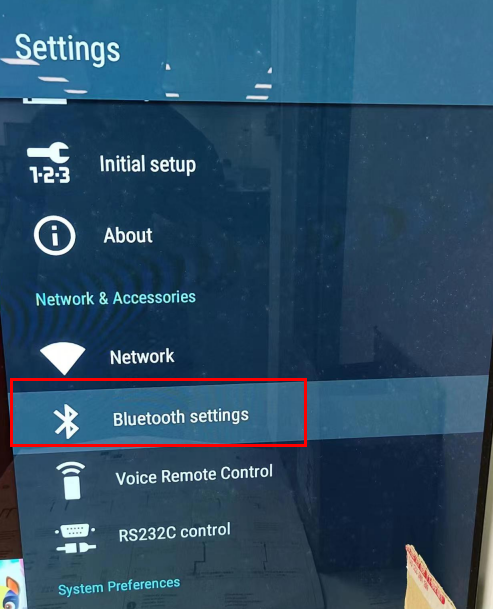
Step 3: choose Add devices and wait for TV searching the available Bluetooth accessory (Rotel Bluetooth)
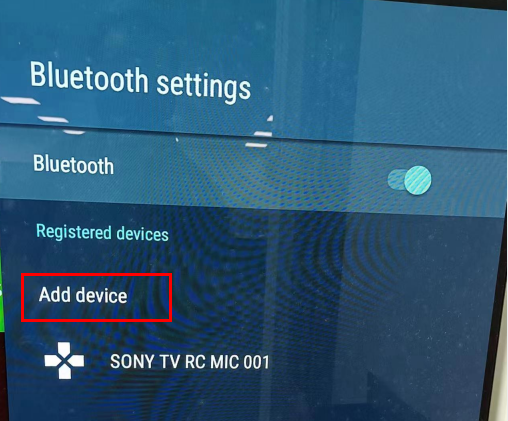
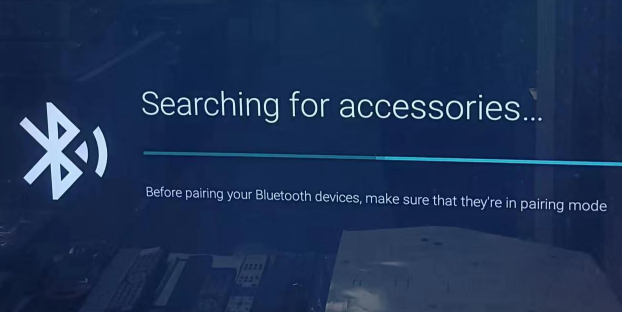
Step 4: It may take about 1 to 2 minutes to search the accessory until Rotel Bluetooth(927F1A) appear on upside right corner.
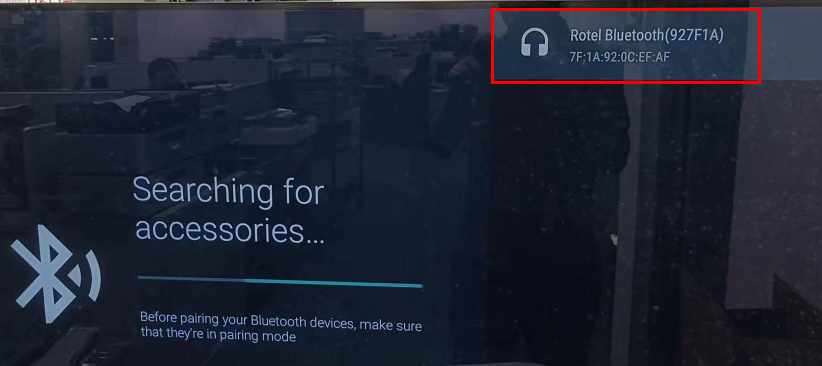
Step 5: Choose Rotel Bluetooth(927F1A) on TV menu then go to pair.
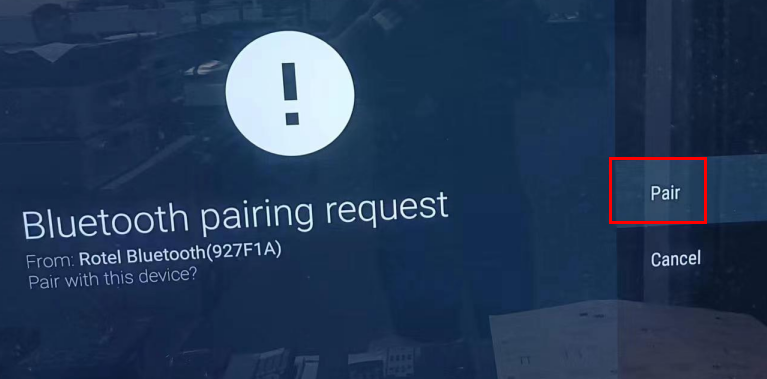
Note: If pairing is failed, please try to searching the Bluetooth again and pair it one more time.
Step 6: Back to the TV Bluetooth settings menu, if pair work succeed the Rotel Bluetooth(927F1A) will display on the available accessory list as below.
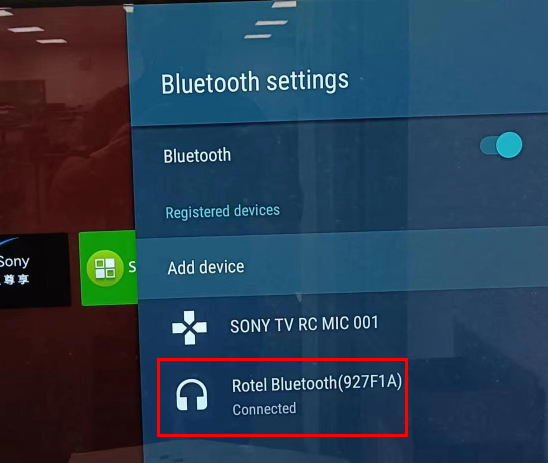
Step 7: Check the A12 display screen if the Bluetooth icon and sample rate information appear, which means A12 has connected with TV successfully.
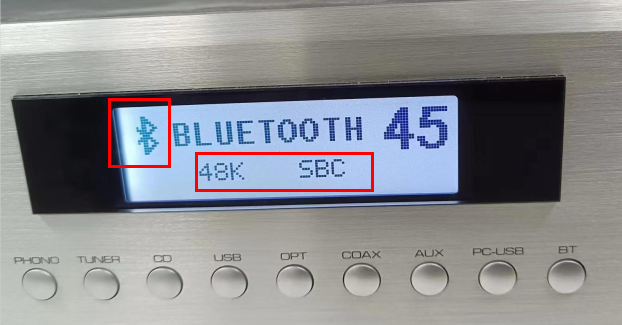
PDF file download please click below:
Yes - if your Rotel product has a back panel input labeled "PC-USB", you can simply connect your computer to this USB input using a standard USB cable. The computer should then recognize the Rotel system as an audio device and you can then play music from your computer through your Rotel system. Do note that you may need to select the speaker as the primary output device for the computer.
If you have a Rotel product that does not have a PC-USB input, if your computer has analog or digital audio outputs you could connect your computer to a Rotel receiver or surround processor using one of the analog or digital inputs as you would connect any other source component such as a DVD player or CD player.
Or, for even better sound quality, add a USB DAC to your system such as the RDD-1580. The RDD-1580 features a rear panel PC-USB connection that can be used to connect your computer to the system for high quality audio playback. The DAC would then connect to your Rotel system using the analog output of the DAC into an analog input in the system.
Absolutely, Rotel has rack ears available for many of the 15 series products, either included or available as an optional accessory. Talk to your authorized dealer for details on this.
For other Rotel products such as the 12 and discontinued 10 series, rackshelves from manufacturers such as Middle Atlantic are often an alternative. The Middle Atlantic RSH series rack shelves offer custom faceplates to provide a seamless look when using a rack shelf with many Rotel products.
A Class D amp works by taking the analog input signal and creating a PWM (pulse width modulation) replica of it-essentially a train of pulses, which correspond to the amplitude and frequency of the input signal. In its most basic form, a comparator circuit is used to match the input signal with the PWM signal. The PWM signal is then amplified by an output stage operating in switch mode, which is to say there are two states, on or off, at very high speed, corresponding to the PWM pulses. A linear amplifier's output stages, by comparison, see a continuous waveform and, to avoid distortion, are on for more than half the waveform (Class A/B) or for the complete waveform (Class A), thus greatly reducing efficiency and generating heat.
The amplified PWM waveform is low pass filtered to recover the audio waveform and eliminate spurious ultrasonic noise before outputting it to the speakers. This process seems digital but is in fact analog in nature. The signal is not "digitized", i.e., assigned a numerical value; the PWM pulse train is an "analog" of the input audio signal. What distinguishes Rotel Class D amps from other designs on the market are innovations in the area of generating a highly accurate PWM signal (COM, which stands for Controlled Oscillation Modulation) and in the feedback circuits (MECC, Multivariable Enhanced Cascade Control) to provide a stable filter characteristic in spite of variable loudspeaker impedances. In simple terms, this means that our Class D amps offer full bandwidth performance at very low distortion in "real world" applications-just like our linear amps, but with the benefits of being smaller, cooler and much more energy efficient.
Why aren't there more Class D amps on the market? For starters, creating stable, full bandwidth Class D circuits while controlling RF/EMI byproducts isn't easy. Few companies have the technological know-how to do it. It also requires extensive use of Surface Mount Devices (SMDs), again putting it out of technological grasp of most audio manufacturers. We have invested with a technology partner to realize these designs.
Here's another key detail that often causes confusion. The Switch Mode Power Supply (SMPS) is not what makes these "switching" amplifiers. As just described, the amplification stage is a high speed switching circuit and what defines this design as Class D. A Class D amp could, in fact, use a conventional power supply; and a linear amp could use a SMPS. A traditional power supply stores large amounts of energy, but wastes "excess" energy not demanded by the load in the process. An SMPS matches output to real-time requirements, supplying only the power required by the load, as a result operating very efficiently. The analogy is a water tank (linear supply), which is always being refilled and spills over if demand is insufficient; compared to an endless series of buckets (SMPS), which can be slowed down or sped up as required. The SMPS in our Class D amps reflects the fact that the Class D amplification circuit does not require the massive energy storage of a linear power amp, so the more efficient/compact SMPS is a better choice.
To sum up, our Class D designs offer:
Rotel models with a front USB input will support Bluetooth streaming when the supplied Bluetooth dongle is connected. Models with built-in aptX Bluetooth streaming can skip step 1 as the Bluetooth module is already active.
NOTE: Not all Bluetooth dongles will operate with the Rotel device. Please use the one supplied. If you do not have the dongle, please contact your local Rotel dealer for assistance obtaining one.
扫一扫以下二维码或者搜索微信公众号即可关注,获取最新鲜的ROTEL资讯!
微信公众号:rotel-hifi
